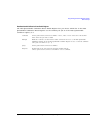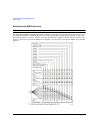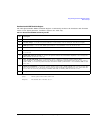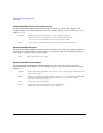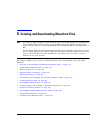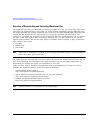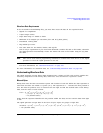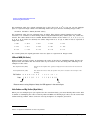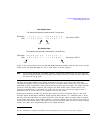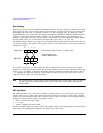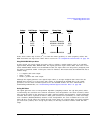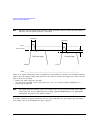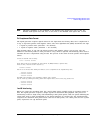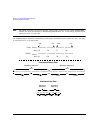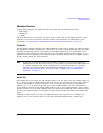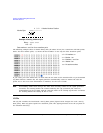
Agilent N518xA, E8663B, E44x8C, and E82x7D Signal Generators Programming Guide 187
Creating and Downloading Waveform Files
Understanding Waveform Data
Notice in the previous figure that the LSB and MSB positioning changes with the byte order. In little
endian order, the LSB and MSB are next to each other in the bit sequence.
NOTE For I/Q data downloads, the signal generator requires big endian order. For each I/Q data
point, the signal generator uses four bytes (two integer values), two bytes for the I point and
two bytes for the Q point.
The byte order, little endian or big endian, depends on the type of processor used with your
development platform. Intel processors and its clones use little endian. (Intel© is a U.S. registered
trademark of Intel Corporation.) Sun™ and Motorola processors use big endian. The Apple PowerPC
processor, while big endian oriented, also supports the little endian order. Always refer to the
processor’s manufacturer to determine the order they use for bytes and if they support both, to
understand how to ensure that you are using the correct byte order.
Development platforms include any product that creates and saves waveform data to a file. This
includes Agilent Technologies Advanced Design System EDA software, C++, MATLAB, and so forth.
The byte order describes how the system processor stores integer values as binary data in memory.
If you output data from a little endian system to a text file (ASCII text), the values are the same as
viewed from a big endian system. The order only becomes important when you use the data in binary
format, as is done when downloading data to the signal generator.
Sun is a trademark or registered trademark of Sun Microsystems, Inc. in the U.S. and other countries.
1 0 1 1 0 1 1 1 1 1 1 0 1 0 0 1
15 14 13 12 11 10 9 8 7 6 5 4 3 2 1 0
Data
Bit Position
1 0 1 1 0 1 1 1
15 14 13 12 11 10 9 8
Data
Bit Position
Big Endian Order
Little Endian Order
1 1 1 0 1 0 0 1
7 6 5 4 3 2 1 0
Hex values = E9 B7
Hex values = B7 E9
LSB
MSB
MSB
LSB
The lowest order byte that contains bits 0–7 comes first.
The highest order byte that contains bits 8–15 comes first.



